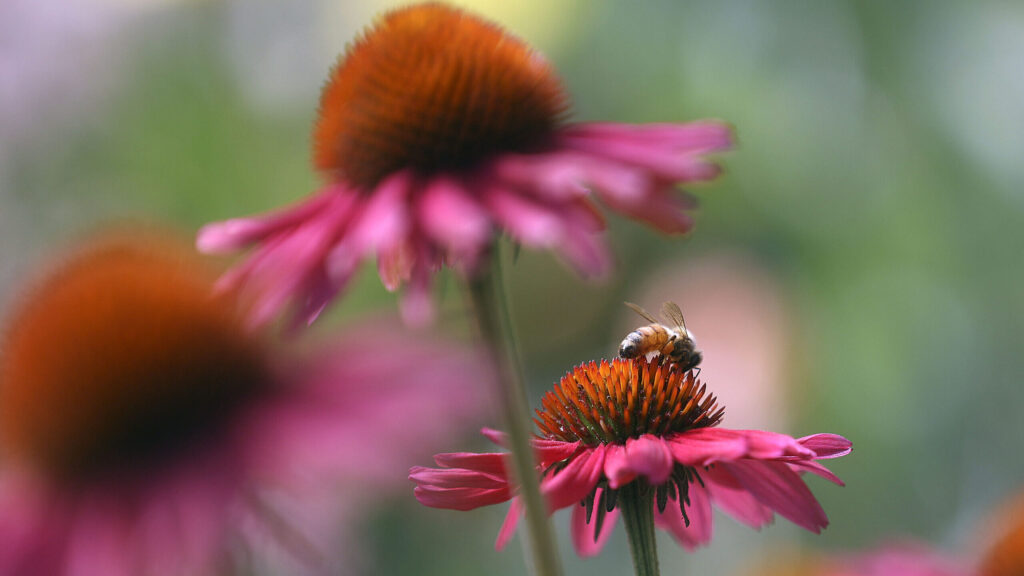SALT LAKE CITY — Native pollinators are in decline worldwide. To help, the Utah Department of Agriculture and Food (UDAF) is offering grants to eligible applicants who wish to take part in building a more pollinator-friendly environment.
The annual grant is called the Utah Pollinator Habitat Program, and it focuses not only on pollinator plants but also on native plants.
“They have a ton of partnerships, such as with BLM and Forest Service, and they go out and wild collect a lot of these seeds that are growing right here in our wildlands,” said Liz Hamilton, a horticulturist with UDAF. “And then they bring them back and then they have a partnership with the state jail horticultural program to grow those seeds on.”
The 2025 application period runs from March 1 to April 15. In order to be eligible, you need at least 900 square feet of land to work with. If your application is chosen, you will receive a free kit with a variety of about 100 pollinator-friendly plants.
“We would like you to have water-saving measures in place. We would prefer that you have drip irrigation and things like that, but it doesn’t preclude you from the grant if you do not. And then you have to agree that you will prepare and create a place for these plants. They’re not just going to sit on your back porch,” Hamilton said.
Applicants will also be asked to check in and report the status of the garden every year for three years.
The pollinator decline
One example of a species being considered for endangered species designation is the monarch butterflies.
“Usually in those counts where they’re doing the population checks down in California and Mexico, they’re seeing hundreds of thousands or even millions of butterflies every year, and this year the count … is down at 9,000 butterflies that flew into Mexico and California areas to overwinter,” Hamilton said.
Part of this has to do with habitat destruction, meaning the areas where they would normally travel through no longer have host larval food.
How does this impact what we grow?
Honey bees aren’t the only species pollinating the food in Utah. In fact, they aren’t even native to the Americas. According to Hamilton, they are actually native to Europe and Asia.
“So we’ve imported them over here and we transport them around so that we have them for crops and things like almond orchards,” she said. “They are important for industry reasons, but also we have these native bees that were here before us. And so those plants that have come up and adapted and evolved along with those bees like your squash, your corn, your tomatoes, things like that have pollinating mechanisms that are specific to native bees.”
For example, bumble bees pollinate tomatoes by biting the flower with their mandibles and shaking the flower to release the pollen.
“[That] is why when you’re looking at pollination issues on your plants, you’re supposed to go through and shake the plants … because you’re mimicking that pollinator habit,” Hamilton said.
Read more from the KSL Greenhouse show:
KSL Greenhouse is live Saturdays from 8 a.m. to 11 a.m. Follow the show on Facebook, Instagram, and YouTube. You can also find more gardening info on our linktr.ee.
